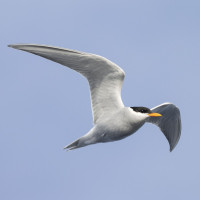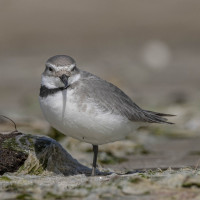Opis
With thousands of waders roosting on the sandspit (particularly in summer), and many hundreds of gulls and terns around, the Motueka sandspit is one of the top places to see waders in Aotearoa. From a nearby car park and the first estuary, you walk out on the thin sandspit on the sand for about 3 km until you reach the regular roosting spot of hundreds of Bar-tailed Godwit, Red Knot, large numbers of Ruddy Turnstone for NZ, Wrybill, Pied Stilt, and the two oystercatcher species. The uncommon Whimbrel are regulars in summer, and the site is frequently visited by rarities such as Terek Sandpiper and Australian Tern. On the spit and in the estuary besides it you can expect White-fronted Tern and Caspian Tern throughout the year and Black-fronted Tern from February to October.
The walk in the sand can be streneous but that makes finding the large number of birds all the better. Keeping a good distance and thus bringing a spotting scope is advised as there may be no natural barries between the roosts and you.
Szczegóły
Dostęp
The Raumanuka And Motueka Sandspit Scenic Reserve car park is about 2 km from the centre of Motueka, which itself is about 45 km west of Nelson. Another entrance is the end of Harbour Road directly east of Motueka that can save you about 1,5 km on the spit, but might require wading through a bit of water. The walk itself is flat, but can be strenuous due to being completely on sand. Don't forget to use sunscreen.
Note that this is an ever changing habitat and the common roosting places can thus change.
.jpg)
.jpg)
.jpg)


